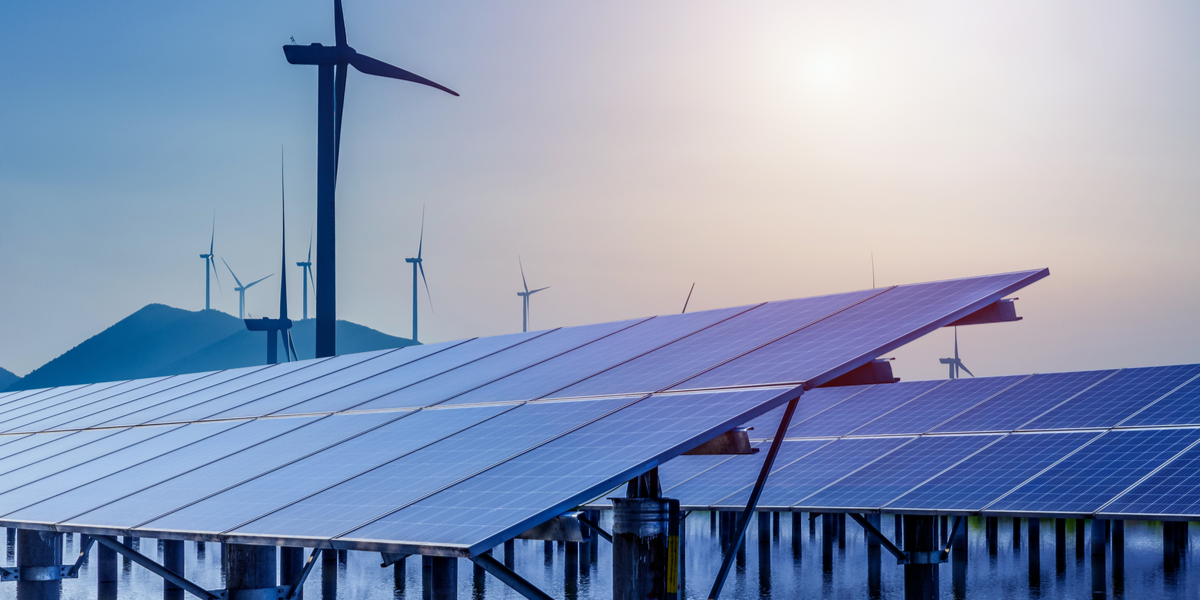Efficiency is the Most Cost-Effective Pathway to Reliable Renewables
Let's Save Energy
Alliance to Save Energy's Blog
Efficiency is the Most Cost-Effective Pathway to Reliable Renewables

2022 is expected to be another record year for the deployment of renewable energy. The latest numbers from the U.S. Energy Information Administration predict that renewables will make up to 23% of U.S. power generation, rising from 20% in 2021. Globally last year, an estimated 290 gigawatts of renewable capacity was brought online.
This is good news for low-emission power generation and staying on track to meet our climate goals. However, as the power mix becomes increasingly dependent on sources like solar and wind, new challenges will arise for ensuring grid reliability, because the sun doesn’t always shine and the wind doesn’t always blow. Battery storage is often the first solution that comes to mind to ensure that customers’ energy needs are always met. Long-duration storage can provide power for days after the electricity is generated. But as a recent U.S. National Renewable Energy Laboratory (NREL) study points out, storage isn’t the only option, and needed technology may not be readily available. As more communities depend upon renewables, the NREL study explores how energy efficiency would make the transition more sustainable, reliable, and cost-effective.
The problem with long-duration storage technologies is that many are “currently either uneconomical, geologically constrained, or still underdeveloped.” In fact, the NREL study finds if the grid was to go 100% renewable, the last 25% of the transition would result in significant increases in costs if relying on long-duration storage for reliability. The study then compares those costs to other methods of improving reliability, including varying mixes of renewable resources, oversized generation capacities, and investments in energy efficiency. As is so often the case, energy efficiency was found to provide indispensable value – offering a trifecta of benefits by decreasing necessary variable generation capacity, storage requirements, and transmission capacity. The researchers concluded that "oversizing renewable capacities by a factor of 1.4 to 3.2 and aiming for 52% to 68% in energy savings through building energy-efficiency measures lead to cost-optimal paths depending on the region of the country."
Efficiency’s role in ensuring a reliable transition is two-fold. One, incorporating energy efficiency measures reduces the amount of energy needed for end-uses, such as heating and cooling a building. For example, let’s say a community wants to rely entirely upon renewable energy to power their homes. If each house in the community reduces its energy use by 60% through energy efficiency measures, then the community will significantly decrease the amount of time when power generation cannot meet demand, therefore a smaller (and cheaper) battery system can be used. The researchers concluded that on a grid-size scale, making homes and offices more energy-efficient would reduce the amount of renewable resources needed, decrease the amount of storage, and cut transmission costs, ultimately supporting the implementation of a decarbonized energy system.
But efficiency can do even more to smooth the transition. Not only can efficiency improvements minimize the overall amount of renewable capacity and storage that needs to be built out, but Active Efficiency – which integrates traditional efficiency measures with opportunities presented by digital technologies – can put these resources to optimal use by better aligning energy demand with supply. The NREL study assesses the technical potential of a buildings’ load flexibility, such as flexible air conditioning control, which can shift when (not just how much) air conditioning is turned on to align with when supply is abundant and clean. Through this better alignment of supply and demand, the study found that demand flexibility had the potential to reduce daily battery storage requirements from 37% to an astonishing 81%. To learn more about the benefits of demand flexibility, check out the Active Efficiency Collaborative’s recently released Demand Flexibility Valuation Report to better understand its role in reducing costs and decarbonizing the grid.
The NREL study lay outs a multistep process that can cost-effectively transition the grid. Increasing supply by oversizing generation capacity and reducing demand through energy efficiency and load flexibility can reliably align clean energy resources with daily and seasonal power demands, reducing the need for uneconomical long-term storage. As the clean energy transition accelerates, it’s clear that energy efficiency and Active Efficiency must be central players.
RECENT BLOG POSTS
STAY EMPOWERED
Help the Alliance advocate for policies to use energy more efficiently – supporting job creation, reduced emissions, and lower costs. Contact your member of Congress.
Energy efficiency is smart, nonpartisan, and practical. So are we. Our strength comes from an unparalleled group of Alliance Associates working collaboratively under the Alliance umbrella to pave the way for energy efficiency gains.
The power of efficiency is in your hands. Supporting the Alliance means supporting a vision for using energy more productively to achieve economic growth, a cleaner environment, and greater energy security, affordability, and reliability.



